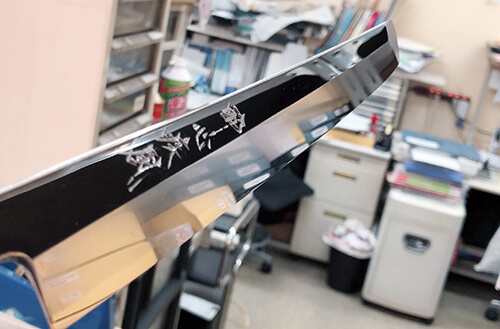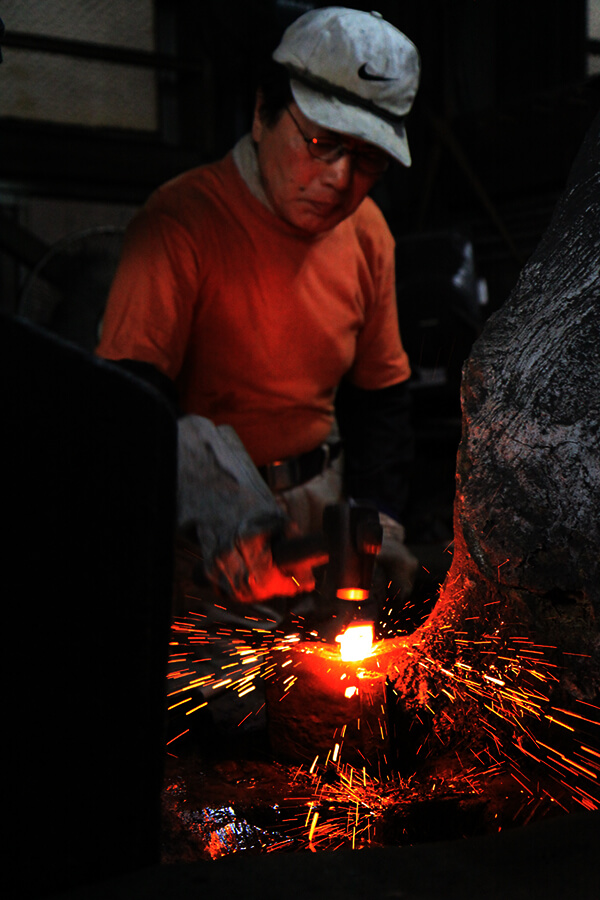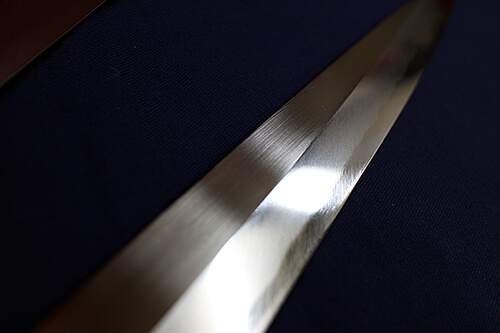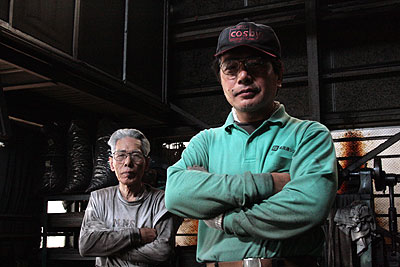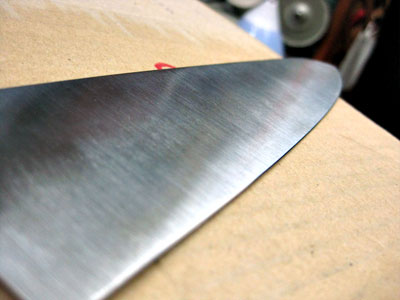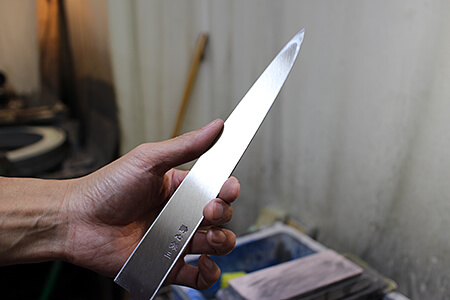Honyaki and ripples
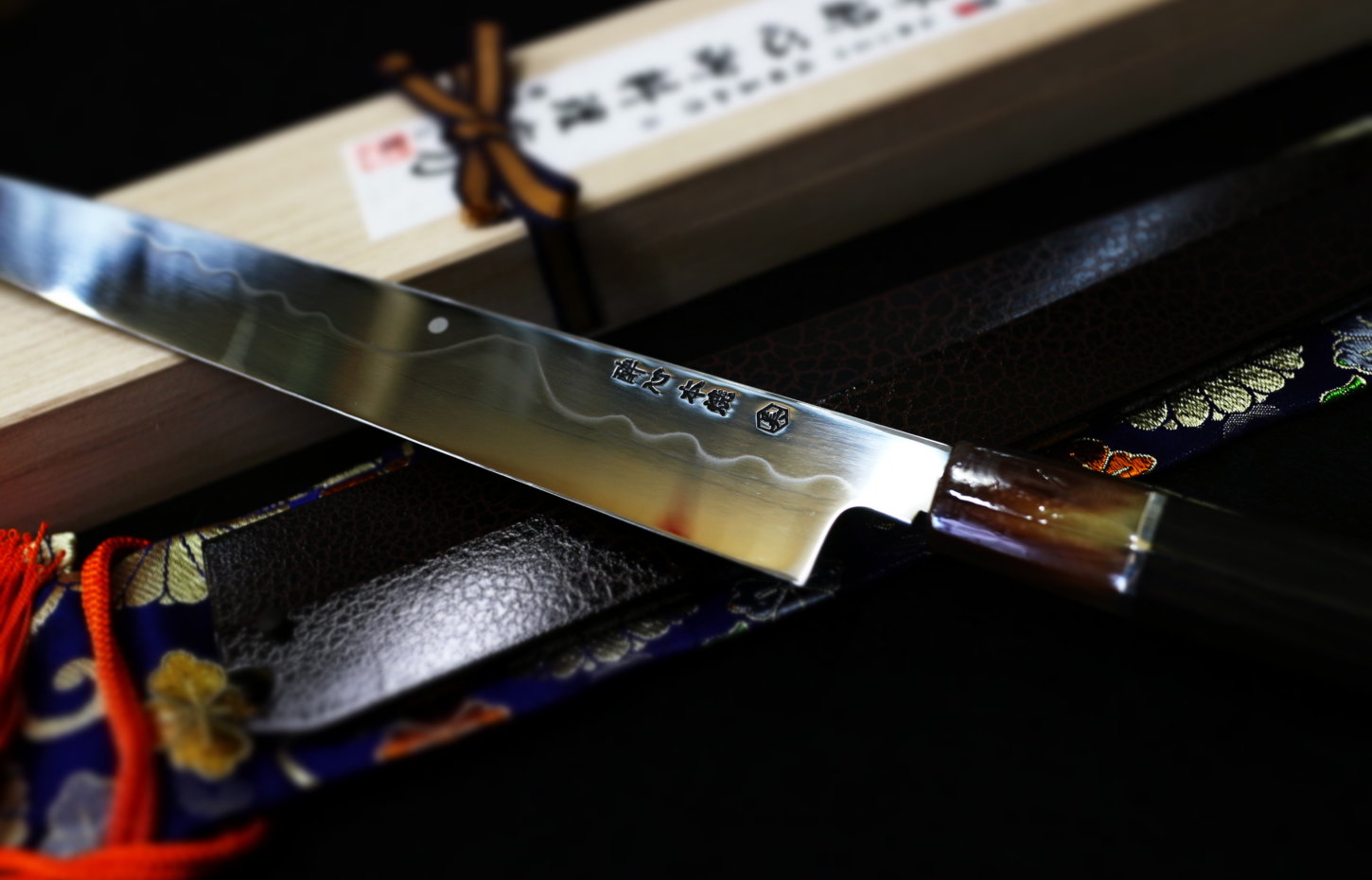
Lately, it’s been non-stop around here, no time to catch a breath (^^; Polishing the handles of butcher knives, sharpening away… Working on a mountain of repaired knives, polishing and honing! And right in the middle of all that hustle, a craftsman making Suisin Honyaki knives shows up! I was dying to ask about oil quenching versus water quenching, about the ripples and all that!! So, I had to put off some urgent shipments and (brace for overtime!) squeezed in some questions. Craftsmen are usually tight-lipped, but today, I got quite a bit out of him.
Is it better to have ripples on a knife? What’s the difference between oil quenching and water quenching? Why are Honyaki knives so darn sharp? That’s where the conversation blossomed. This craftsman is really skilled, but as he was leaving, he said something: “I still have a long way to go in my training.” Before hearing him out, I thought blacksmiths just made knives based on instinct, feeling, and experience, but it seems they go through meticulous calculations and memories while crafting. This is definitely going into the Suisin Special Feature file! But I’ll give you a little taste! “First off, when refining steel, it has to reach temperatures of over 1000 degrees. That’s just how it goes in manufacturing. So, how do you turn that high-temperature steel into a knife with excellent sharpness? The answer is, ‘Work at lower temperatures.’ How do you turn steel that’s reached 1000 degrees into high-quality steel and then craft it into a sharp, long-lasting knife!” Ending it like this might leave you wanting more, huh? But that’s it for today (^^)b
Hibishugyo
2007-02-20
